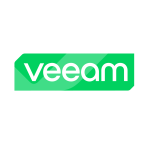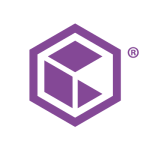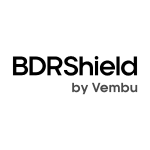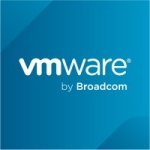What is our primary use case?
We came from two different systems. We had one product that was for our campus side and a different product for the hospital side. We wanted to bring those together and not have too many products in one environment. Rubrik covers everything in our VMware, for both campus and hospital. It does all of our backups. Anything that gets backed up for either side now goes through it.
We were siloed out into many different teams on both sides and we had a backup team on campus and a backup team on the hospital side. When those were brought together, the backup teams were dissolved and they were put into the VMware side where they're now managing hardware and server hardware refreshes.
My team is now the storage and backup team and we've taken on that task. Backups are offered as part of pretty much any ticket requesting a new server, for campus or hospital, that is a request for a new server. We spin up the backup at the server creation.
Our Rubrik is all on-prem. We back up our VMware environment and we also do a few physicals. We do some SQL and we do some Oracle.
How has it helped my organization?
It depends on what we're recovering, but some recoveries, before Rubrik, would take 30 minutes-plus. Now, similar recoveries that we've done have taken only seconds.
Also, when we first put this into place, we were actually moving to a hybrid cloud approach as well. We were trying to offer server creation as a simple ticket. We were doing this through offering the products, the catalog, and the automation behind everything to spin up the servers and deal out the storage. The two products that we actually have in our environment weren't very friendly with that automation piece but Rubrik, with its SLA policies, makes it very easy for us to say, "Hey, if this is a tier-zero application, we want this SLA applied globally," although there aren't very many of those in our environment. And if it's a tier-one application we can say, "Oh, we want this SLA applied." It does a very good job of keeping things clean in our environment. We also went through making sure we have everything tagged in VMware so that Rubrik can just pull that tag and apply that SLA. So things work pretty smoothly with all of that together.
We use the archival functionality. We tend to keep things on a Brik for a certain amount of time and, of course, it's a larger amount of time for tier-zero applications. And then we archive off to a private cloud that we have here at the university. That definitely keeps costs down because we have a deep and cheap storage solution for that cloud, Hitachi Content Platform. That was one of the main reasons that we went with Rubrik, as well, as it is compatible with HCP. We have quite a few petabytes of that and we wanted to make sure that we could leverage that and use it to our advantage.
Another benefit has been that management time has gone down significantly. Before, we had those two teams, one team for NetBackup and one team for Commvault. Each of those teams had two people on them. Now, we have one person on the storage team who is dedicated pretty much to backups, and the rest of us jump in as needed. We've really been able to consolidate that effort, and since it's an easy to use interface, we were able to pick up and run with that as a storage team. But with NetBackup before, we did have to build out quite a few servers and other stuff to get it into HCP. The whole model behind that, having lots of media servers, was very costly when you add in all of the hardware costs, licensing, et cetera. With this, it's quite a bit cheaper.
And Rubrik has definitely reduced downtime, because if we can spin up a recovery faster to that local CPU and the storage of Rubrik and have it up instantly, we can definitely get back to work sooner.
What is most valuable?
We do like the instant recovery because, beforehand, we would tell people, "Hey, it's going to take anywhere from 30 minutes to an hour to spin this up and, in that time, we're going to need your help with certain questions." We would sit there and work with them, but it always took quite a while. Now, we say, "Okay, give me 15 seconds and I can get this back up for you." And within that 15 seconds it's on and the only thing that we have to do afterwards is vMotion it off of the Rubrik storage back to where it should rest.
We also like the web interface. We mainly log in to the node and work from that, but occasionally we will log in and look at things when offsite. It's very intuitive and it works really well.
In addition, the solution's APIs play in with our automation piece for hybrid cloud. We wanted everything to work without manual interaction. We wanted everything to just play through when a ticket is submitted and automatically spin up the backup that we wanted, based on the tag in the VMware object. Our VMware team was the one that mainly looked at those APIs and built all of that out, but they haven't had any issues with it. It's worked exactly as designed.
What needs improvement?
The interface is still slightly clunky and has room for improvement. They do work with us whenever we mention anything that needs to be done or anything that we want. We find that bringing up the management interface is a little slow and not as intuitive as we would like, but it's been getting better as it evolves.
Rubrik is a somewhat new company, so it needs to become a little more established, and that just comes with time. It's not really too much of a concern or a weakness. It's just something that hasn't happened yet.
For how long have I used the solution?
We've been using Rubrik for about a year and a half to two years now.
What do I think about the stability of the solution?
The stability has been good. We don't run into a ton of issues on it.
What do I think about the scalability of the solution?
The scalability is wonderful. That is one of our biggest advantages with this. We can scale out as big or as small as we need to. We went with 20 nodes or so at the start and we've got over 40 now. We continue to expand as needed. We're still not all the way done with rolling this out to replace everything, but every year we're getting more and more nodes in there and replacing more and more.
We've covered about 85 percent of our environment. With the other 15 percent, it wasn't that Rubrik couldn't handle it, it's that the budget only allows for so many nodes to be purchased at a time. On top of that, we need to make sure that we do it in a way that's non-disruptive for work, and there are some teams that would be affected by disruption. We need to go a little bit at a time, which is what we've done.
For the future, I do see us using it more. We have been doing a soft launch on Oracle, because we needed the tool that Rubrik has that allows for integration. That was still in something of an early stage of development, and we weren't comfortable putting it into production until it was in a more developed state. So we have used Rubrik to back up Oracle, but we've gone about using less of the automation pieces that Rubrik offers, and we're using it more as just a landing spot until that is fully developed. That's about the only piece that we're going to use more in the future.
How are customer service and technical support?
When we have run into issues, we've reached out to our support team at Rubrik and they've been very quick to respond. Whether they're in the office or not, they do take our calls and help us out. It's always a quick response.
They're a newer company, so I'm sure they're still establishing their place, but the escalation teams and everybody that we've worked with have been capable and they've been able to fix our problems without having to bring in too many people.
Which solution did I use previously and why did I switch?
We had Commvault and NetBackup before. Both of those were based on costly consumption-based licenses, and our CIO really disliked that model. The licenses that we had had been increasing in cost year after year and it just wasn't feasible to keep two separate products that weren't a good fit for the automation piece, for hybrid cloud. And they were on a slightly more pricey model. So rather than going to one or the other, we went out to see if there was anything that made more sense at the time. And that's when we found Rubrik.
With Rubrik, we have an agreement where it isn't license-based, and we are able to add more Briks as needed and more clusters as needed. It makes it extremely easy to expand our backup environment as the need arises.
With the other models out there, you would buy one quota and then you would hit it and prices would change and other things would happen. They have you locked in, no matter what. It was basically a situation where you had to pay whatever price they said you had to pay. With Rubrik, it's been very nice to have all of the equipment in our own data center and to have a little bit more control. For example, if we think we're going to need this much next year, this is what the hardware cost is going to be, and we can pay for any additional capacity that we need. That's been really nice with Rubrik.
How was the initial setup?
Setting up Rubrik was both a little bit straightforward and a little bit of complex. We had the team that sold us the product there with us during setup and we went to add in all of the nodes at the same time. That was something that even that team had thought we could do, and then they remembered, in the middle of adding all the nodes at the same time, that we needed to do it in groups. That does take time. We were putting in something like 16 or 20 nodes, and we had to do it four-at-a-time. We had already done the physical installation and all the cabling, and all that portion. But when we started to add in the nodes, we had to do four and then wait for it to finish on that, and then do another four and wait for it to finish on that.
I think that, with time, they may implement a system that cues them up and continues to add nodes as it can. But that seems to be a similar problem to what occurs with other products in the same category. We also have Cohesity in our environment, which we don't use as a backup product, we use it strictly as a NAS, and it suffers from that same issue.
Our Rubrik setup took a few days, between our getting network issues figured out on our side, getting all of the cable management figured out with our data center team, the physical installs, the configuration with the Rubrik partners, and then adding in those nodes four-at-a-time until we had them all in.
We could have done it with less staff but we did want to make sure that all of us were aware of how the implementation worked, so we brought in all five of our team, two Rubrik partners, and two of our reseller partners, as well.
For maintenance of Rubrik we require two to three people. One works on Rubrik pretty much all the time, and the other four of us just jump in as needed on little things here and there.
In terms of Rubrik users, in addition to the five of us who do administration, we've given out access to a few of our database groups, so far, where there are 10 to 15 people.
What about the implementation team?
Our reseller was ASG at that time, now it's Sirius. Everything was fine with them. On the Rubrik side, we had an engineer and a sales engineer, and that worked really well.
What was our ROI?
With Rubrik, we have been able to allocate FTEs to the other areas. We could have eliminated them but we chose to reallocate them. As we've had people either retire or move on to something different, we've either not replaced some, or we've been able to replace some of them with lower-level staff, simply because of the ease of use of this product.
On the hospital side, the ROI is from the lower cost, less work to manage it, and the smaller footprint in the data center, which means less power and cooling.
What's my experience with pricing, setup cost, and licensing?
The pricing and licensing of Rubrik is better than products that we've had in the past. It was quite a bit cheaper than Commvault and NetBackup.
Which other solutions did I evaluate?
We actually reached out with our VAR and we evaluated anybody that could use the HCP that we have for archive storage. There weren't too many on the market that could do that. Rubrik was really the only solid option that we had at the time, other than Commvault and NetBackup. We weren't too happy with the latter two because of how much they were costing at that time.
What other advice do I have?
We did physical PoCs in our environment and we did have Cohesity and Rubrik side-by-side, as well as NetBackup and Commvault. We did PoCs for moving to public cloud as well, for some of these services. The PoC with Rubrik stood out.
Make sure that you work with your support team that's going to support you after your purchase and make sure that you're able to work with them well, before you pull the trigger on it. We like to build partnerships. When we have those partnerships, we're able to really rely on them for a long time.
I am a fairly new entry into the backup field. Before, we had Commvault and NetBackup, and when they were showing us how to use those, and trying to teach us some of the terms in the backup world, it felt like backup was a very niche piece of IT, and that there was a lingo and a language behind it. It seemed that there were definite things that people had experienced before that were common among all backup products, and things that they were left wanting or hating. With this new product, Rubrik, we walked into it blind, not being backup admins, and it made a lot of sense to us. And when we did bring in a backup admin, they said it was quite different to anything that they had worked on previously, and that it made more sense and that it was just quite a bit easier to manage.
Rubrik is something that everybody can understand fairly easily, and when we have given others access to it, such as the database teams, and we've let them run with it and see what they can do, they've been able to implement it really well. They've been able to figure out how to implement the tool in exactly the way that they wanted, whereas before there may have been limitations.
We haven't used the ransomware recovery at this point. We've got some protection behind that, where they are locked down and require additional effort to delete and to change. We follow guidelines from our IT security team and Rubrik together. We just haven't seen a scenario yet where we've actually needed to use that.
We have used Rubrik's predictive search, although we don't use it too much right now. Mainly, the way that we've used it so far has been the traditional backup and restore, where we get tickets stating that a backup needs to be spun up and it's done automatically. Then, when somebody comes back later on and says, "Hey, we need this item restored," we're able to call them up and restore it with them on the phone, within a matter of minutes. We haven't really had to use the file search too much or a lot of the tools that they have available for us, just because the need hasn't been there yet.
When it comes to recovery, we usually spin it up and turn it over to the team that asked us to recover that data. The information and identity access management team had to spin one up recently. They said that they had a bad patch and wanted us to spin back to that morning. We did that, and it had lost some of the network settings and some of that stuff that they were used to getting. We spent about 15 to 30 minutes with them and everything was back exactly the way that it should be. But that was pretty much exactly the same with other products that we had so it wasn't something new for us.
Which deployment model are you using for this solution?
On-premises
Disclosure: PeerSpot contacted the reviewer to collect the review and to validate authenticity. The reviewer was referred by the vendor, but the review is not subject to editing or approval by the vendor.
















